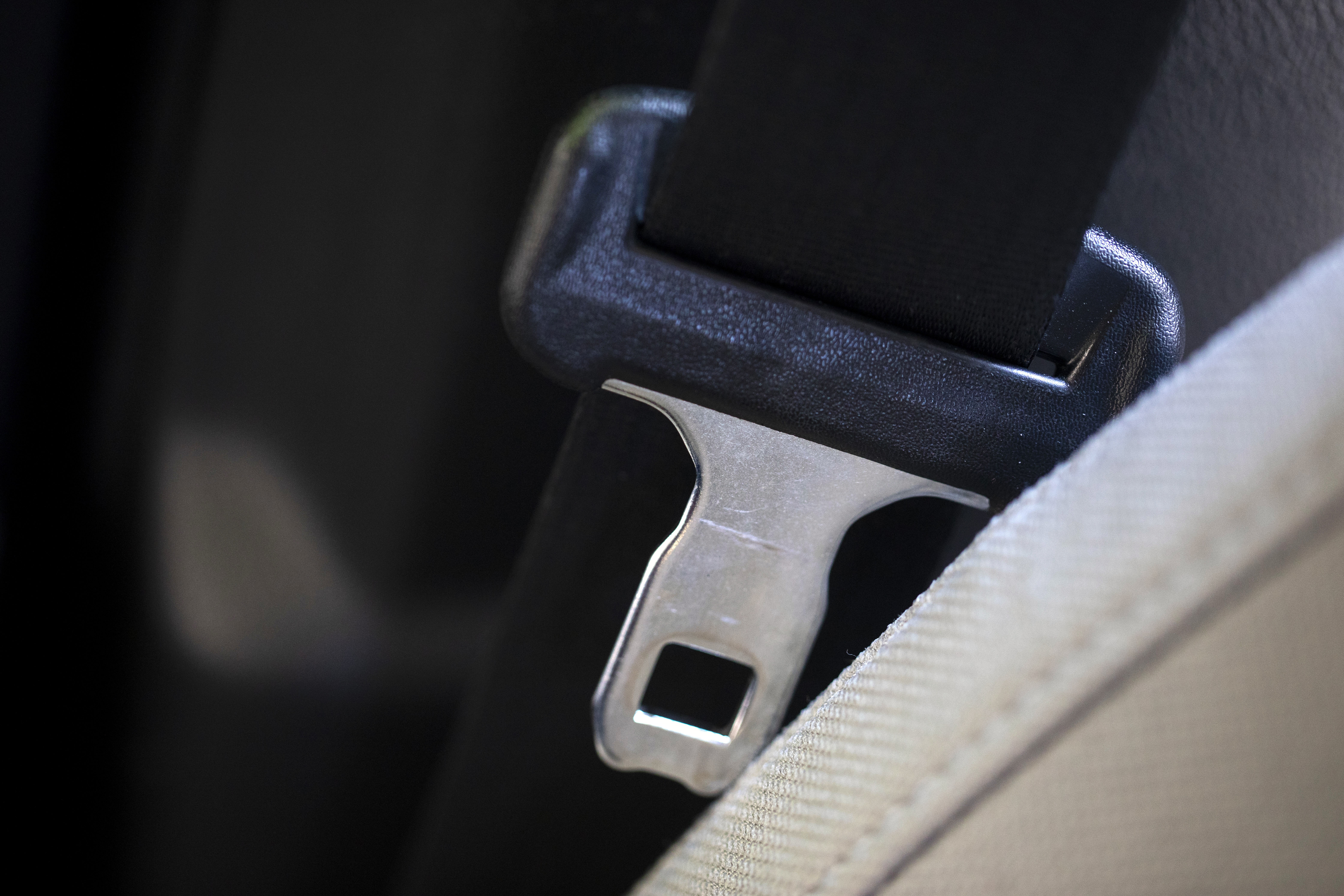Proponents of ranked-choice voting are recalibrating after Americans across the country broadly rejected measures intended to implement the system.
It wasn’t all bad news for advocates of the voting method: A measure aimed at repealing the system looks on track to fail in Alaska, where it was approved just four years ago. And in Washington, D.C., voters approved ranked-choice voting.
But overall, election reform measures that would have set up ranked-choice systems or done away with partisan primaries — or, in some cases, both — had a bad night in November. Such measures failed in Arizona, Colorado, Idaho, Montana, Nevada, Oregon and South Dakota on Election Day, prompting organizers to look for new routes to grow their movement, such as educational efforts and action through state legislatures.
“We see a lot of opportunities still ahead,” said Deb Otis, director of research and policy at FairVote, a nonpartisan group backing ranked-choice voting. “We know that the path to reform isn’t always a straight line. And the movement is still on a growth streak, but we’re going to sometimes hit roadblocks.”
“In retrospect, this was always going to be a tough year for these kinds of ballot measures,” Otis added. “I think in a crowded presidential year that sucked up a lot of the oxygen, voters may have defaulted ‘no’ to these new concepts in democracy reform.”
Nick Troiano, executive director of the election reform nonprofit Unite America, which has championed open primary efforts, also chalked up the losses to the unique “rejection election” at the presidential level this cycle — as well as to spending from opponents of the measures “to plant all sorts of doubts in voters’ minds.”
Ranked-choice systems are currently in place statewide in just two states: Alaska and Maine. Ranked-choice voting and open primary efforts accounted for 6 percent of ballot measures this cycle, and 8 percent of ballot measure contributions, according to an analysis from Ballotpedia just ahead of Election Day. In Colorado, detractors spent nearly half a million dollars opposing the state’s proposal for a top-four open primary and ranked-choice general election voting — though that sum was notably a fraction of the $14.6 million spent in favor. The Colorado Sun puts that figure closer to $19 million.
Another factor organizers cited behind their 2024 losses was voter confusion about what exactly the election reforms propose, and how to fully participate when they’re implemented.
“Between the confusion and the massive Trump vote, we really took a shellacking,” said Jim Jones, a former Idaho attorney general, former justice on the state Supreme Court and supporter of Idaho’s election reform proposal.
In the Gem State, a measure would have opened up a top-four primary and set up ranked-choice voting in the general election, but roughly 7 in 10 Idahoans opposed it on Election Day.
Jones attributed some of the opposition to voters who may have been comfortable with nonpartisan primaries but were wary of a stark switch to ranked-choice voting, which has drawn criticism from national Republicans, including the president-elect, and Democrats alike. That might suggest organizers need to take smaller steps in the coming years, such as advancing open primaries through state legislation.
“I think we’re going to kind of assess our position, but I doubt that we would try an identical ballot measure like that,” Jones said of this year’s push.
In Colorado, advocates suffered another defeat when their ballot measure was rejected by voters. The measure would have required all candidates, regardless of party affiliation, to run under one ballot for the same office. The top four finishers would head to the general election, where voters would rank them by choice.
Sean Hinga, the Colorado legislative and political director for the American Federation of State County & Municipal Employees (AFSCME), was against the proposed ballot measure. He noted “when you’re trying to pass a statewide ballot measure that applies to governors and legislators, it is just a different scenario than running in a city election” and said ranked-choice voting requires an “immense amount” of voter education.
“I think most of the groups that were opposed to this were really worried about the impact on voters, especially voters of color and underserved communities, and if we could see that it could be implemented without harming those communities, without harming voter engagement,” he noted.
There were some bright spots, however, for advocates. In Washington, D.C., a ballot measure passed allowing unaffiliated voters to participate in either party’s primary and allowing voters to rank their top five picks for office.
“People all over our country are demanding more of their politicians, and so tools like ranked-choice voting and systems where primaries are letting more people in and participating so that more people can participate in the democratic process — people are demanding those things,” said Lisa Rice, who led efforts to pass D.C.’s measure.
The initiative’s success in D.C. — voters approved it by a whopping 73 percent — is particularly notable given the city is largely Democratic, and the ballot measure was opposed by both the city’s Democratic Party and top officials such as Mayor Muriel Bowser (D).
Rice explained that her group was able to convince voters to pass it by explaining that independents made up a notable faction of the city, despite D.C.’s blue leanings. And she noted that primaries were actually taxpayer-funded, not expensed by the political parties.
“A lot of people did not understand that these are publicly financed elections. But when you say, ‘We all pay. We should all be able to vote in the most consequential election in this city,’ a lot of people go, ‘Oh my God, that makes sense,’” Rice said.
Otis said the success in both D.C. and Alaska “furthers the narrative that, where voters have used ranked-choice voting, they like it.”
A proposed repeal of Alaska’s relatively new ranked-choice system is headed to a recount, local outlets reported this week, after the measure appeared to fail by just a fraction of a percentage point.
Otis is optimistic about potential paths forward for the election reforms in states where they lost this cycle. In Alaska, for example, voters defeated a ranked-choice voting initiative back in 2002, then approved the change nearly two decades later. But FairVote is looking now to the municipal level to make more inroads.
“The next statewide movement, I would hope, comes in a state where a number of voters already have it at the city level, or have tried it out for something like presidential primaries,” Otis said. “When we get a municipal win, it does two great things: It delivers better local elections and also acts as a building block for larger wins in the future.”
Richard Pildes, a New York University law school professor who has advocated for states to follow in Alaska’s footsteps, emphasized the expansion in recent years of ranked-choice voting at the local level. In Oregon, for example — where voters rejected a ballot measure to make the change statewide — ranked-choice voting is already in place in Portland, Corvallis and elsewhere.
“I think people may be more comfortable with incremental change,” Pildes said. “If you look below the state level, you see more and more cities and towns that are using ranked-choice voting, and so people are going to get more experience with the system and, depending on how they evaluate that experience, become more supportive of it at the state level.”
At the same time, organizers “need to do more education and engagement with voters, so that when they see this on the ballot, they understand what the reforms are intended to accomplish,” Troiano said.
While advocates are assessing their next moves, opponents of ranked-choice voting and open primaries have also taken steps to expand their footprint. In Louisiana earlier this year, Gov. Jeff Landry (R) signed legislation that transforms the state’s “jungle” primary system into a closed primary system for certain offices in 2026.
The state’s prior system has all candidates running for the same office listed under one ballot, regardless of party affiliation. If no candidate outright won at least half of the vote, the top two finishers advanced to the general election.
Meanwhile, in Missouri, advocates were able to successfully pass a ballot measure that would ban ranked-choice voting.
“While Americans are frustrated with politics, I think most Americans are just fine with the traditional way of voting,” said Trent England, executive director of the anti-ranked choice voting group Save Our States, in a statement.
Advocates acknowledge they face an uphill climb to change voting systems, but they’re projecting confidence for the long haul and assessing this year’s results as they look for new inroads.
“There’s clearly widespread dissatisfaction with how government doing these days,” Pildes said. “And in periods of significant dissatisfaction, there are openings for political reform.”


























